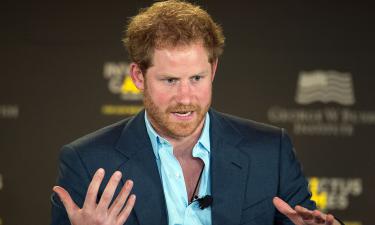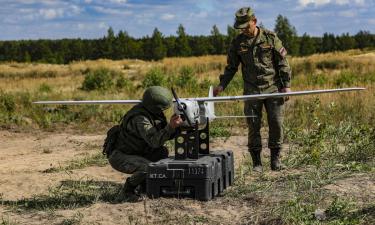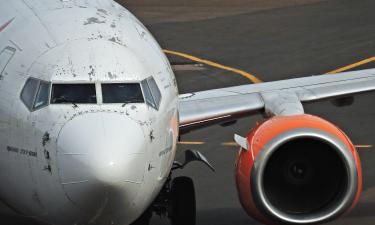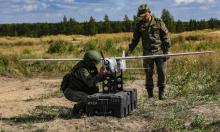Time For Kite Flying: India-Russia-China Trilateral Axis
 As the countdown for another Indo-Russian summit at Moscow begins, media mills have revived speculation on the India-Russia-China trilateral axis idea floated by Yevgeny Primakov on a trip to India five years ago
As the countdown for another Indo-Russian summit at Moscow begins, media mills have revived speculation on the India-Russia-China trilateral axis idea floated by Yevgeny Primakov on a trip to India five years ago
Soon after Nato’s aerial offensive against Yugoslavia, India’s Prime Minister Atal Behari Vajpayee also hinted at a Lucknow press meet the possibility of a triangular arrangement.
Some trace it to as far back as Boris Yeltsin. Finding the plan appealing, President Vladimir Putin is now acting as a bridge between Beijing and New Delhi, the weakest link in the triangle. But the debate on the axis became directionless when the media joined it. The Hindu and the Star TV channels in India are credited to be the authors of the mist surrounding the discourse. The Christian Science Monitor raised a scare publishing a story with the heading “Putin Pushes Strategic Triangle With India and China.” Though it was the Nato intervention in Yugoslavia and the American invasion of Iraq that catalyzed the debate, the media made it a free-for-all.
The entire strategic triangle controversy is without ballast because the media term the arrangement alternately as an axis one minute and as an alliance another minute. One day it is strategic, directed against the United States and the next day it is not. The regular summits between India and Russia and the frequent meetings between Putin and his Chinese counterpart supply the basis for this confusion. This flight of imagination also receives its strength from the annual meetings between the foreign ministers of the three countries at New York on the margins of the UN General Assembly session. Two weeks ago, they met at New York and discussed Iraq and the reform of the UN system. The subjects they discussed tend to give away their target. While the summits have so far been bilateral, the foreign minister-level meetings are trilateral and have now become an annual feature in the tradition of the summits. These goings-on reinforce the assumption that if a trilateral summit had not taken place so far, it may be because the three countries balk at putting an official stamp on the axis idea and give away too prematurely a plan that may cause misgivings and hamper the recovery of the international system from unilateralism. Remember that it was Putin who brought Vajpayee and Chinese President Hu Jintao together at St.Petersberg giving the meeting the status of a trilateral summit..
Periodically, all the three countries have separately denied plans to form an alliance of the sort the media are circulating. Despite such denials, media surmises refuse to die for valid reasons. All the three countries have common interests and perceptions that make it hard to dismiss axis plans out of hand. While mutuality characterizes common interests, common perceptions originate in the fear of single super power hegemony. India and China share with Russia concerns relating to Islamic terrorism. Its tentacles have spread from Kashmir to other parts of India. China has the problem of Uighar separatists in Xinjiang province, an area rich in mineral resources. All the three of them face growing ethnic nationalism and Islamic fundamentalism. Russia now wants India too to join the Shanghai Five, a group addressing the issues of separatism and terrorism.
The collective strength of the three countries to bring sense and stability to the international order is underestimated. Together they account for more than two-thirds of the world’s population and all of them are nuclear powers. Russia is a one-time super power and both India and China are two of world’s leading economies and no mean military powers. Russia needs the markets of China and India and the latter need the great energy resources of Russia. India has committed $ 2 billion to develop Russia’s Sakhalin oil and gas project while China has signed a deal to pump up to 30 million tones of oil from Siberia. Russia is a major supplier of military hardware to India that buys 60 per cent of its army’s needs, 70 per cent of navy’s needs and 80 per cent of air force needs from Russia. Each one of the three gains from relations based on self-interest.
Though neither China nor India belongs to the Group of 8, the Group covets them for the mega markets they offer for their goods. The world sees them as major global players. Bush has said in the State of the Union message that “America was working with Russia and China and India in ways we have never before to achieve peace and prosperity.” Though all the three are critics of America’s overseas actions, Washington continues to be overtly friendly with all the three of them. Also, the trio too is pragmatic in its relations with the United States. The old rivalries based on ideological differences have given place to new equations linked to national interest.
Observers of the international scene are not optimistic about the emergence of the trilateral alliance because they think the two of the prospective constituents, India and China, have unresolved problems with each other. India has a border dispute with China with a history of war with the latter. Tibet is a sore point. Beijing does not recognize Sikkim as part of India. At one time, India declared that China and not Pakistan was its main enemy. Beijing is not happy with New Delhi’s increasing interest in Central Asia and is reported to oppose its entry into Shanghai Five. It continues to supply missile and nuclear technology to Pakistan that is a major exporter of terrorism to India. There are also differences arising from India’s support to America’ NMD project.
However, one factor that weakens these arguments is the new sense of realism in international relations that has emerged after America’s invasion of Iraq and its threats to Iran and North Korea. There is urgency now for sidelining troubled histories and get down to harmless self-aggrandizement. As a mater of facts one set of bilateral relations does not affect another set. For example, China never held close Indo-Russian defense relations against India or Russia. Nor Russia ever showed hurt at India and the USA getting closer. Sino-Indian relations are set to enter a pragmatic, even dynamic, stage. In May, India’s Defense Minister George Fernandes and Chinese Military Commission chief Jiang Zemin discussed steps to improve military to-military relations through greater interaction between officers of both sides. On the Sikkim issue too, both sides expressed optimism. They said, “We will not allow historical baggage to stand in the way of developing our relations.” China and India have already begun working on confidence building measures
Soon after Vajpayee’s visit to China this June, his Foreign Minister Yashwant Sinha said said, “We are within striking distance of reaching 10 billion dollars in the next two years. This showed the vitality that existed in the trade economic relationship between the countries and we can make enormous progress in these areas. The Chinese Ambassador to India, Hua Junduo, said last week in Delhi that the new Sino-Indian thaw had "achieved mutually beneficial and win-win results". Several agreements had been signed with the two sides reaffirming their commitment to address their differences in a "fair, reasonable and mutually acceptable manner". When Vajpayee met Hu Jintao at St. Petersberg, he talked of an Asian Century.
Triangle or no triangle, axis or no axis, today’s realities indicate strong and growing links between Delhi-Moscow and Moscow-Beijing. Delhi-Beijing relations are on the mend and Moscow can be counted upon to bring them closer. Two of the three bilateral relationships are in excellent shape. Even while, Sikkim, Tibet and Pakistan define Delhi-Beijing equations, it is naïve to believe that they will come in the way of mutual co-operation in trade and defense and in fighting terrorism or defending multilateralism. India, Russia and China are already working as a group, though not as an axis/alliance, in areas of common concern and benefit. Neither of the three is worried about what label it should fix on the new arrangement. Their interest is in making it work. In short, the aim of the trilateral mechanism is to collectively gain by drawing on each other’s resources and to prepare to face future threats to an equitable world order.
Dasu Krishnamoorty
Special for Pravda.Ru
Subscribe to Pravda.Ru Telegram channel, Facebook, RSS!





